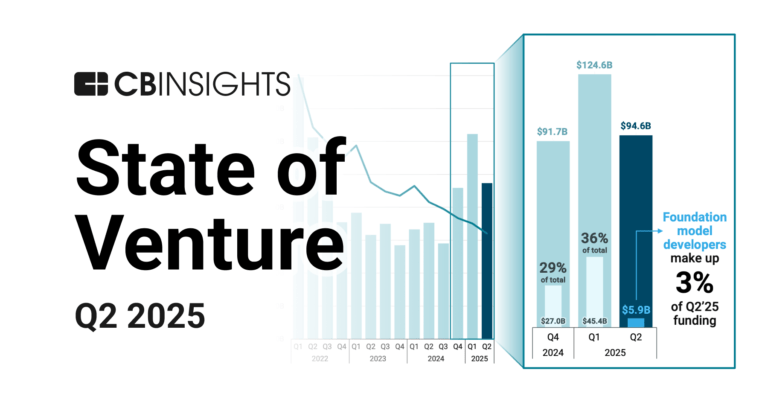
World View
Founded Year
2012Stage
Series E | AliveTotal Raised
$2.659BLast Raised
$2.574B | 6 mos agoRevenue
$0000About World View
World View specializes in stratospheric exploration and remote sensing technology. The company provides uncrewed flight systems for navigational steering and persistent flight over designated areas, with remote sensing, communications, weather, and research applications. It's also working on human spaceflight experiences that will take private citizens to the edge of space using high-altitude balloons. It serves the aerospace and remote sensing industries. It was founded in 2012 and is based in Tucson, Arizona.
Loading...
ESPs containing World View
The ESP matrix leverages data and analyst insight to identify and rank leading companies in a given technology landscape.
The aerostat developers market (also called airships) involves the design, manufacturing, and deployment of aerostats, which are lighter-than-air systems like balloons and airships used for various applications. This market caters primarily to military and defense sectors for purposes such as surveillance, intelligence gathering, and communication, but also extends to commercial uses like scientif…
World View named as Leader among 8 other companies, including Lockheed Martin, RTX, and QinetiQ Group.
Loading...
Research containing World View
Get data-driven expert analysis from the CB Insights Intelligence Unit.
CB Insights Intelligence Analysts have mentioned World View in 1 CB Insights research brief, most recently on Jul 10, 2025.

Jul 10, 2025 report
State of Venture Q2’25 ReportExpert Collections containing World View
Expert Collections are analyst-curated lists that highlight the companies you need to know in the most important technology spaces.
World View is included in 3 Expert Collections, including Travel Technology (Travel Tech).
Travel Technology (Travel Tech)
2,715 items
The travel tech collection includes companies offering tech-enabled services and products for tourists and travel players (hotels, airlines, airports, cruises, etc.). It excludes financial services and micro-mobility solutions.
Aerospace & Space Tech
4,993 items
These companies provide a variety of solutions, ranging from industrial drones to electrical vertical takeoff vehicles, space launch systems to satellites, and everything in between
Defense Tech
1,292 items
Defense tech is a broad field that encompasses everything from weapons systems and equipment to geospatial intelligence and robotics. Company categorization is not mutually exclusive.
World View Patents
World View has filed 27 patents.
The 3 most popular patent topics include:
- aerodynamics
- aircraft configurations
- balloons (aircraft)

Application Date | Grant Date | Title | Related Topics | Status |
|---|---|---|---|---|
10/28/2022 | 2/4/2025 | Balloons (aircraft), Car classifications, Aircraft configurations, Aerodynamics, Subcompact cars | Grant |
Application Date | 10/28/2022 |
|---|---|
Grant Date | 2/4/2025 |
Title | |
Related Topics | Balloons (aircraft), Car classifications, Aircraft configurations, Aerodynamics, Subcompact cars |
Status | Grant |
Latest World View News
Oct 17, 2025
Chinese spy balloon incident, in which the balloon crossed the United States until it was shot down off the coast of South Carolina by a United States Air Force F-22 Raptor. However, not all of the balloons are from China. One that floated over Colorado earlier this month was quickly identified as a "Stratollite" balloon owned by a New Mexico company that launches high-altitude balloons for research. "That is one of our Stratollites, which is a fancy name we give to one of our stratospheric high-altitude balloon systems. Some people label these as weather balloons because that's what's familiar," Phil Wocken, vice president of World View Enterprises, told FOX31 TV via an email. "But the technology and capabilities are so much more advanced." Similar objects were spotted in Wisconsin in June and then in Alaska in August. Both were also determined to research balloons, launched by another American company. Yet, as Americans look to the skies and spot a balloon, the immediate assumption has been that these are Chinese in origin, even as Beijing publicly claimed to have halted its balloon program in 2023. Chinese Balloons Still Flying China clearly hasn't grounded all of its balloons, as there have been launches of the lighter-than-air craft over Taiwan, the self-ruling island nation that Beijing maintains is a breakaway province that will be returned to mainland control by force if necessary. Taiwan's Ministry of National Defense detected more than four balloons on eight separate days between December 2023 and April 2024. Balloons are part of ongoing surveillance and reconnaissance efforts by the People's Liberation Army over Taiwan, but the technology could also be used to spy on America. "These balloons are marvels of modern dual-use engineering. They carry high-definition cameras, RF collection arrays, and adaptive telemetry packages built from commercial components," explained geopolitical analyst Irina Tsukerman, president of threat assessment firm Scarab Rising. In the era of spy satellites and increasingly advanced drones, the question is why China continues to employ balloons. One simple reason is that "spy balloons" can also operate at sixty thousand feet, above civil air traffic, yet still low enough to capture ground-level details. "The payloads are cheap enough to lose and sophisticated enough to matter," Tsukerman added. "Each one can collect signal patterns, measure response latency, and record the exact tempo of American air defense. They serve Beijing's need for redundancy in surveillance. If satellites are blinded or jammed in wartime, a network of steerable, high-altitude balloons could still feed targeting and communications data to the PLA's command systems." China's advantage in balloons lies in its industrial base. "The same factories that churn out telecom equipment and drones also produce balloon films, star trackers, and pressure valves," added Tsukerman. "Export restrictions and sanctions on a single company are theater, not deterrence." A Time-Tested Technology Balloons are a proven tool that has been used for military surveillance for more than two centuries . Even in the era of drones, balloons remain effective; in part because they are a low-cost solution that can map an adversary's vulnerabilities in real time, and often without the fear of detection. "The vehicles are slow, silent, and maddeningly ambiguous, flying just below the altitude where air defense radars are designed to track fast, hot targets. They gather data that satellites cannot. They loiter long enough to observe habits, infrastructure patterns, and electromagnetic signatures. They turn the air above American cities into a floating laboratory for foreign intelligence," warned Tsukerman. Countering spy balloons is also more complicated than it may seem. For every balloon that is spotted, many more aren't. High-altitude balloons are made of soft, non-metallic materials, making them difficult to track, especially as they can produce a radar signature similar to that of a small bird. Moreover, balloons lack engines and create virtually no infrared signature. Their slow, but deliberate movement can also cause them to be filtered out by modern radar systems that were designed to detect fast-moving threats like missiles. "Detection architectures must be tuned for slow, cold targets at high altitude. Multi-static radar networks, passive RF grids, and optical tracking systems can fill the gap that traditional radars ignore," Tsukerman continued. "Non-kinetic defenses such as directed energy or jamming should disable command links and sensors without creating hazardous debris. Recovery teams should be trained and equipped for safe captures that preserve payloads for forensic exploitation. Most of all, engagement thresholds should be pre-authorized. The worst time to debate legalities is when a foreign platform is already over continental territory. She added that the legal framework remains outdated. The current "rules of engagement" for unidentified high-altitude platforms are vague and heavily classified, resulting in delayed decisions until the political cost becomes unbearable. A public, tiered system of response would restore deterrence. "It would make clear that any foreign object entering U.S. airspace without clearance is subject to disruption, recovery, or destruction based on altitude, behavior, and proximity to critical infrastructure," Tsukerman noted. "Such clarity would also reduce the temptation for adversaries to exploit ambiguity as cover for espionage."
World View Frequently Asked Questions (FAQ)
When was World View founded?
World View was founded in 2012.
Where is World View's headquarters?
World View's headquarters is located at 1805 East Aerospace Parkway, Tucson.
What is World View's latest funding round?
World View's latest funding round is Series E.
How much did World View raise?
World View raised a total of $2.659B.
Who are the investors of World View?
Investors of World View include Accel, New Vista Capital, Breakthrough Victoria, Sierra Nevada, Paycheck Protection Program and 14 more.
Who are World View's competitors?
Competitors of World View include Sceye, Iwaya, Urban Sky, Space Aura, Lux Aerobot and 7 more.
Loading...
Compare World View to Competitors
Urban Sky specializes in stratospheric technology within the aerospace and defense sectors. The company offers tactical, autonomous stratospheric balloons equipped with interchangeable payloads for applications including defense, data sensing, and scientific research. Urban Sky's products are designed for monitoring, mapping, and data collection, providing an alternative to traditional aerial and satellite methods. It was founded in 2019 and is based in Denver, Colorado.
Iwaya operates as a space development company. It utilizes balloons to reach the stratosphere. It works on space experiments, space balloons, remote sensing, and space travel research. The company serves clients operating in the aerospace sector. Iwaya was founded in 2016 and is based in Hokkaido, Japan.
Zephalto specializes in low-carbon stratospheric travel, offering unique experiences in the space tourism sector. The company provides journeys to the stratosphere aboard the Céleste capsule, designed for comfort and safety, allowing passengers to experience the curvature of Earth from 25 km above. Zephalto also contributes to scientific research by facilitating data collection during flights to aid in understanding the atmosphere and monitoring climate change. It was founded in 2016 and is based in Le Pouget, France.

Sceye focuses on providing stratospheric platforms for connectivity and observation within the aerospace industry. The company offers airships that enable direct-to-cellphone broadband connectivity and earth observation capabilities, including monitoring of climate change triggers. Sceye primarily serves sectors that require advanced aerial observation and communication technologies. It was founded in 2014 and is based in Moriarty, New Mexico.

Near Space Labs provides aerial imagery and earth observation, using a fleet of robotic cameras to capture images from the stratosphere. The company offers imagery services that enable businesses, partners, and government organizations to access remote sensing data for various applications. Near Space Labs serves sectors such as government, insurance, and conservation with its imaging solutions. Near Space Labs was formerly known as Swiftera. It was founded in 2016 and is based in Brooklyn, New York.
Lunar Outpost focuses on space robotics and lunar surface mobility within the space exploration industry. The company provides spacecraft solutions and robotic systems to support human presence in space. Its customers include entities involved in space exploration, lunar missions, and the space economy. It was founded in 2017 and is based in Arvada, Colorado.
Loading...
